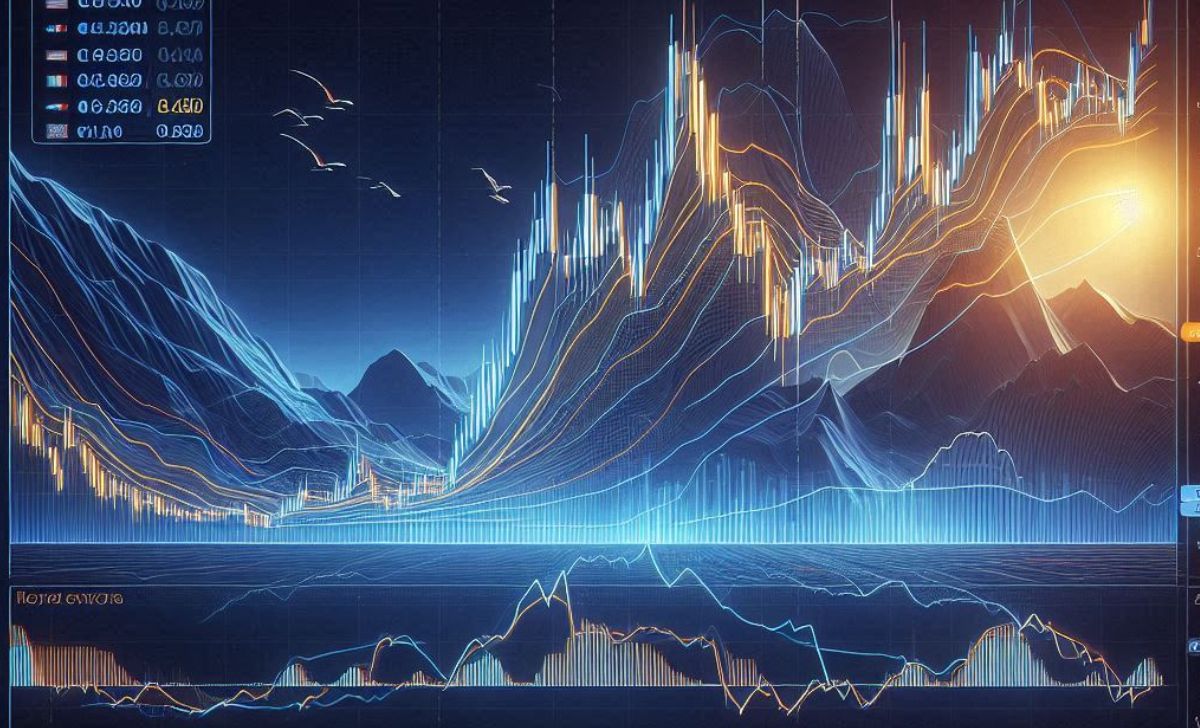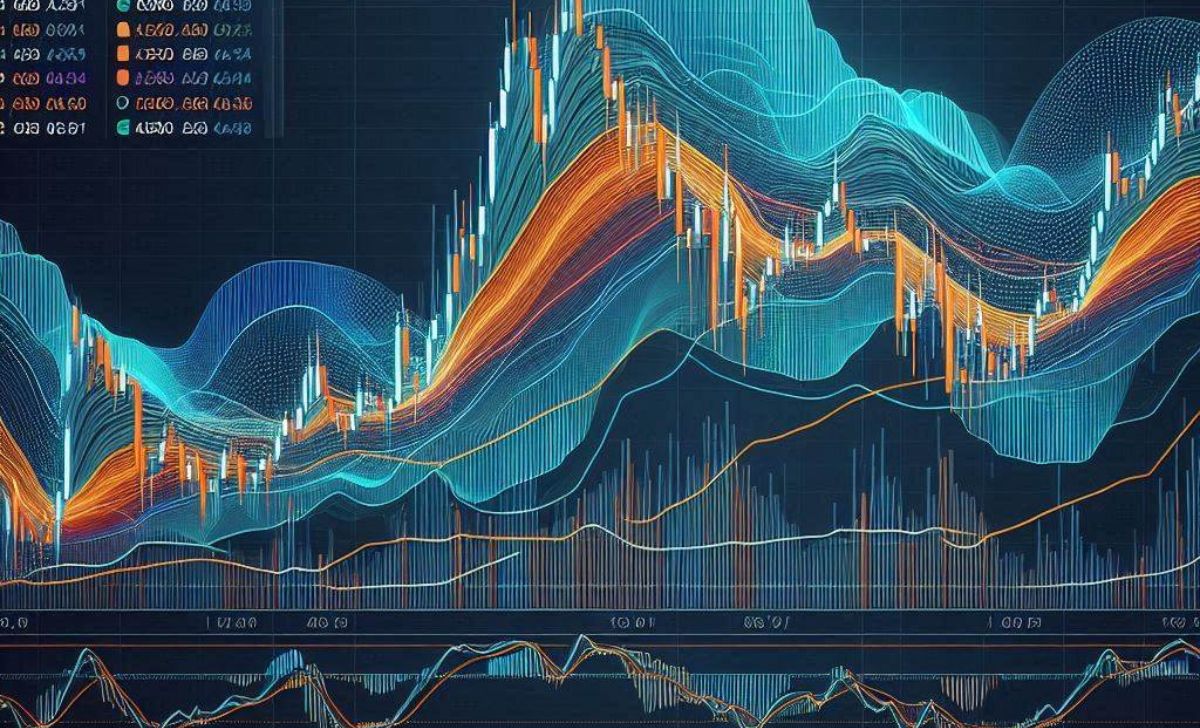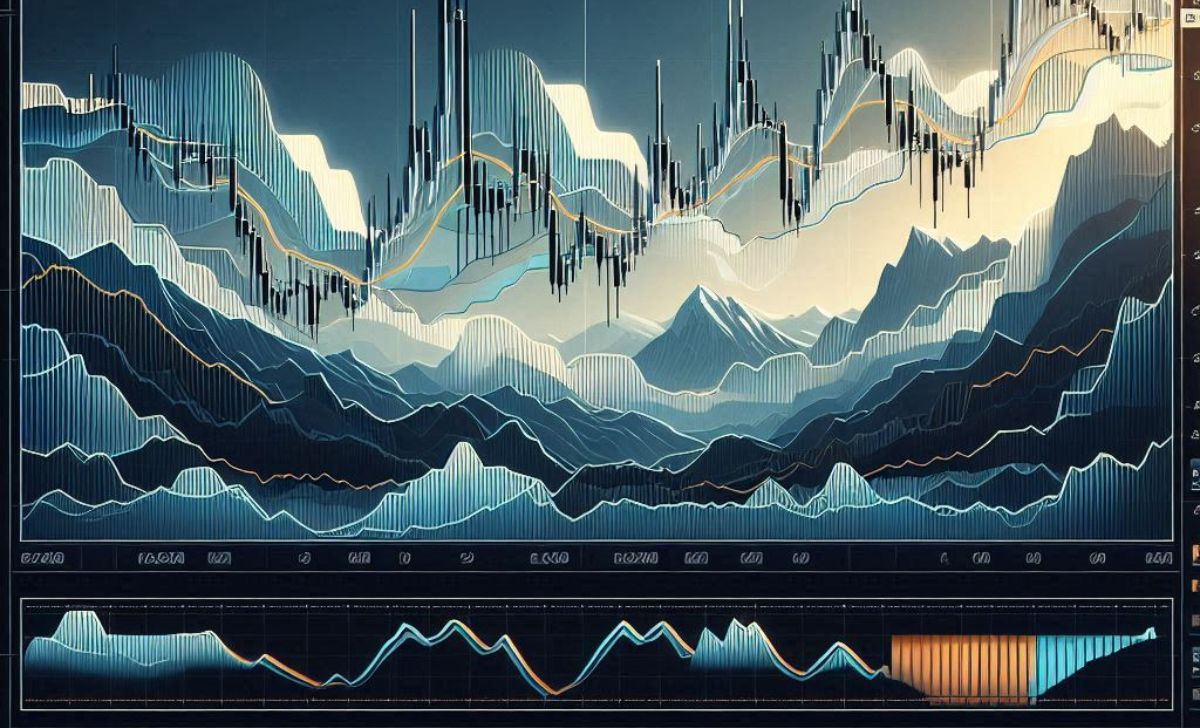The Bump and Run Reversal Pattern is a rare yet highly effective chart formation that signals a sharp trend reversal after an unsustainable price spike. It consists of three distinct phases lead-in, bump, and run, offering traders a chance to catch major reversals early. When used correctly on platforms like XM, this pattern can provide high-probability entry points in both bullish and bearish markets.
Sudden spikes followed by a swift collapse or reversal can catch traders off guard—unless you know what to look for. Here’s how the Bump and Run pattern can help you anticipate and trade those moves on XM, especially as you learn trading and build your pattern recognition skills.
What Is the Bump and Run Reversal Pattern?

The Bump and Run Reversal Pattern (BARR) is a chart reversal pattern that signals a sharp change in market direction following an unsustainable price surge or drop. It consists of a gradually sloping lead-in, followed by a steep “bump”, and ends with a reversal known as the “run.” This structure helps traders identify overextended trends before they reverse sharply.
Who Developed the Bump and Run Pattern?
The pattern was introduced by Thomas Bulkowski, a renowned technical analyst, in his book Encyclopedia of Chart Patterns. He categorized BARR as a visually recognizable reversal signal derived from excessive speculation and momentum imbalance.
What Are Its Three Key Phases: Lead-in, Bump, and Run?
-
Lead-in Phase: A steady, moderate price trend forming along a consistent trendline.
-
Bump Phase: A sharp and accelerated move away from the trendline, often driven by speculation or overbuying/overselling.
-
Run Phase: The price breaks the trendline and reverses direction, typically returning to or beyond the lead-in levels.
Why Is It Classified as a Reversal Pattern, Not a Continuation?
The Bump and Run is classified as a reversal pattern because its structure identifies an exhausted trend that reverses sharply after a steep, unsustainable move. Unlike continuation patterns that consolidate and then resume the trend, BARR indicates a breakdown in trend integrity, signaling a new direction rather than a continuation of the current one.
How Does the Bump and Run Pattern Form in Real Markets?

The Bump and Run Reversal Pattern forms through a three-stage price movement lead-in, bump, and run that reflects the shift from a healthy trend to unsustainable momentum trading, followed by a sharp reversal. Each phase marks a distinct change in market behavior, making this pattern valuable for identifying overextended trends before they reverse.
What Characterizes the Lead-in Phase?
The lead-in phase begins with a moderate, consistent uptrend or downtrend, often forming a rising or falling trendline with a gentle angle (typically 30–45 degrees). Price action in this stage reflects balanced participation between buyers and sellers, with no signs of instability. This phase sets the foundation for the pattern’s structure.
What Happens During the Bump Phase?
The bump phase is triggered when price accelerates rapidly away from the lead-in trendline, forming a much steeper slope (usually exceeding 45 degrees). This sharp movement is often driven by speculative buying or selling, news shocks, or emotional market reactions. Volume may increase sharply as price deviates from its prior trend, creating a clear “bump” visually and structurally.
How Does the Run Phase Confirm the Trend Reversal?
The run phase begins when price breaks the bump trendline, typically returning to or falling below the level of the lead-in trendline. This trendline break confirms that momentum has shifted, marking the reversal. The market often continues in the new direction opposite the bump with increased volatility, completing the pattern. This phase is where traders typically enter and manage their positions for reversal profits.
How Do You Trade the Bump and Run Reversal Pattern Step-by-Step?

Trading the Bump and Run Reversal Pattern (BARR) involves identifying the pattern structure, timing entry at the trendline break, managing risk with logical stop-loss placement, and targeting profit based on the pattern’s height. This step-by-step strategy aims to capitalize on momentum shifts after an overextended price move.
Identify the Complete Pattern Structure
Before entering a trade, ensure the pattern includes all three phases:
-
Lead-in phase: A steady, sloped trendline with moderate price movement.
-
Bump phase: A sharp price acceleration that forms a steep angle relative to the lead-in trend.
-
Run phase (reversal): The point at which price breaks below (in a bearish setup) or above (in a bullish setup) the bump trendline, signaling a trend reversal.
Look for at least a 45-degree angle in the bump phase, as this sharp slope distinguishes valid setups from normal pullbacks — a level of precision and timing emphasized in trader support services such as Contact XM.
Ideal Entry Point – Break of the Bump Trendline
The entry signal occurs when price clearly breaks and closes beyond the bump trendline, ideally with increased volume or strong momentum candles.
-
For a bearish reversal, enter a short trade once price breaks below the lower trendline.
-
For a bullish reversal, enter long after a break above the upper bump line.
Avoid early entries during the bump waiting for confirmation at the breakout to reduce false signal risk.
Stop-Loss Placement – Based on Bump Height or Recent Swing
A proper stop-loss protects against invalidation and helps define risk:
-
Conservative approach: Place the stop-loss just beyond the high (bearish) or low (bullish) of the bump phase.
-
Aggressive approach: Use the most recent swing high or low near the breakout zone. Some traders also set stop-loss distance as a fixed percentage of the bump height (e.g., 25–30%) to keep it proportionate.
Profit Target – Projection from the Bump Phase
Profit is typically taken during the run phase, which can be estimated in two ways:
-
Measured move target: Calculate the height of the bump (from lead-in trendline to peak of bump), then project that same distance from the breakout point in the opposite direction.
-
Support/resistance zones: Use previous structural levels or Fibonacci retracements as alternative targets.
For example, if the bump height is 150 pips, project a 150-pip move from the breakout level as the initial target. Traders may scale out or trail stops once the price moves decisively into the run phase.
How Does the Bump and Run Compare to Other Reversal Patterns?

The BARR pattern is a rare but highly dynamic chart formation known for triggering sharp, momentum-driven price reversals. When compared to more familiar reversal patterns like the Head and Shoulders or Double Tops, BARR stands out for its early detection potential, steep structure, and explosive follow through, especially when fueled by parabolic price moves or speculative excess.
Bump and Run vs. Head and Shoulders: which is earlier to detect?
Bump and Run can often be detected earlier than the Head and Shoulders pattern because it forms during an accelerated price spike rather than after a prolonged, symmetrical topping structure. While Head and Shoulders requires the formation of three clear peaks and a neckline breakout (which can take time), B&R becomes identifiable as soon as the “bump” phase begins to decelerate and price breaks the steep support trendline.
A 2022 study by the University of St. Gallen (Department of Financial Chart Structures) found that traders identifying the B&R pattern correctly were able to enter 1.5x earlier than those waiting for traditional reversal confirmations like H&S breakouts.
Why is B&R considered rarer but more powerful than double tops?
The Bump and Run pattern is rarer because it relies on a steep, unsustainable price acceleration (the bump) followed by a breakdown through a sharp incline line. In contrast, Double Tops form in more horizontal, balanced price structures and often emerge in slower market cycles.
What gives B&R its edge is velocity the initial run-up creates overbought conditions or a bubble like formation, and once the breakdown occurs, profit-taking, stop-loss cascades, and short entries amplify the move. According to a 2021 market structure analysis by the Warsaw School of Economics, B&R breakdowns produced larger average moves (4.7%) than Double Top failures (2.9%) on equities and commodities over a 90-day period.
What makes it more prone to sharp price movement?
Three factors contribute to the Bump and Run’s explosive potential:
-
Steep slope = instability: The angle of the price rise in the bump phase often exceeds 45 degrees, signaling unsustainable momentum.
-
Lack of consolidation: Unlike other patterns, there’s minimal base-building, so once support breaks, there’s little nearby structure to absorb selling.
-
Psychological capitulation: Traders caught buying the top of the bump tend to exit quickly after the break, fueling rapid downside acceleration.
This structural imbalance creates fast, clean reversals, making the B&R a favorite among swing and momentum traders who specialize in aggressive breakdowns.
Can You Spot and Trade Bump and Run Patterns on XM Platforms?

Yes, you can effectively spot and trade Bump and Run Reversal Patterns on XM platforms like MT4 and MT5, using built-in drawing tools, technical indicators, and additional analysis features like Trading Central. These resources make it possible to visually identify the pattern and execute a structured trading strategy.
Are Drawing Tools on MT4/MT5 Sufficient for Pattern Recognition?
Yes, MT4 and MT5 offer all the necessary drawing tools such as trendlines, channels, and angle measurements to outline the lead in and bump phases. You can manually draw the bump trendline and monitor for a breakout. These platforms also allow you to mark key highs/lows and visualize slope steepness, which is crucial for identifying valid setups.
Can You Combine the Bump and Run Strategy with XM’s Indicators or Trading Central?
Absolutely. XM clients have access to Trading Central, which can provide pattern recognition, trend strength indicators, and market commentary. You can also enhance BARR trades with:
-
Volume indicators (e.g., On-Balance Volume) to confirm breakout strength
-
CCI, RSI, or MACD for spotting divergence during the bump phase This combination helps filter high-quality setups and reduce false signals.
Are Demo Accounts Helpful for Backtesting This Rare Pattern?
Yes, XM demo accounts are especially useful for practicing pattern recognition and refining entry/exit strategies for the Bump and Run, which are not frequently occurring. Demo trading allows you to:
-
Replay historical charts and draw the pattern manually
-
Simulate entries and test risk management in real-time conditions
-
Build confidence without financial risk before applying the strategy live
Using XM’s platforms, tools, and demo environment, traders can fully implement the BARR method with structure and precision.
The Bump and Run Reversal Pattern stands out for its ability to identify extreme price behavior followed by decisive trend changes. Although it doesn’t appear often, when it does, the setup can lead to substantial trading opportunities. On XM, combining this pattern with volume analysis and confirmation tools can enhance its effectiveness and improve your overall risk-reward ratio.

Lina Vexley is a forex education specialist with a passion for guiding new traders. She offers step-by-step lessons on MetaTrader and risk control, making XM accessible and practical for traders of all experience levels. Email: [email protected]

 Tiếng Việt
Tiếng Việt
